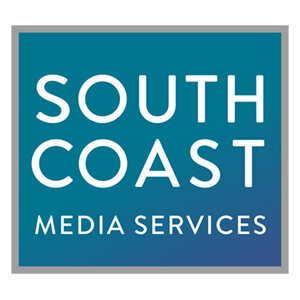UNDERSTANDING YOUR AUDIENCE IS KEY TO A POWERFUL CORPORATE VIDEO
By Wyatt Cagle
I was 11 years old when my dad taught me how to shoot clay discs with a shotgun at Boy Scout camp. That’s something you do as a Texas boy. I must have missed a dozen times in a row. My shoulder hurt from the kick of the padless old shotgun, but the frustration of missing the target hurt more. My dad noticed and asked me one simple question: “What are you aiming at?”
With a level of sarcasm that would usually have gotten me in a lot of trouble I spat back, “The disc!” My dad smiled and said, “Try aiming in front of the disc. Give it another shot.” Irritated at the simplicity, I followed his advice—and wouldn’t you know it, the next shot, bam! The clay disc shattered in the air. Again and again the clay showered down from each successful hit. I kept hitting my target because I knew where to aim.
I think of that principle every time we make a video. You have to ask yourself, “What are you aiming for?” More specifically, “what audience are you aiming for?” Whether you're working in internal communications or external marketing, understanding your viewers’ needs, challenges, and motivations is what turns a video from just another piece of content into a strategic tool that drives engagement and action.
Understanding Your Audience Is the Foundation of Effective Corporate Videos:
1. Boost Audience EngagementIn high-stakes industries, your message needs to cut through the complexity. The more your video addresses your audience’s specific pain points and day-to-day challenges, the more likely they are to engage. When your message resonates, they won’t just watch—they’ll share it, talk about it, and act on it.
This is why the first step in any video production is understanding your audience. Are you speaking to a technical team familiar with industry jargon, or a communications director focused on high-level strategic updates? This knowledge allows us to tailor each video to the exact audience, ensuring it connects with the right people in the right way.
2. Create Emotional ConnectionsWhile many decisions are driven by data and safety protocols, emotions play a huge role in how people respond. A corporate video that only focuses on facts might miss the opportunity to inspire. Change what you're aiming at, just like I did with the clay discs.
When you understand what drives your audience, you can create a video that evokes the right emotions—whether it’s urgency, pride in their work, or relief after a crisis is averted. For example, a safety training video that highlights the courage and teamwork of your employees in a high-risk situation can resonate on a personal level and leave a lasting impact. It’s not just about explaining procedures; it’s about letting viewers see themselves as part of the solution.
3. Strengthen Brand PerceptionYour corporate video is more than just an informational tool—it’s a direct reflection of your brand. Every visual, word, and tone communicates something about your values and mission. By tailoring your message to your audience, you can ensure your video not only delivers information but also strengthens your brand’s relationship with its viewers.
In our experience working with large organizations, we’ve seen how a well-crafted video can significantly boost brand perception. It’s about more than just telling people what you do—it’s about showing why you matter and why your audience should care.
How to Tailor Your Corporate Video for Maximum Impact:
1. Define Your AudienceBefore you start writing a script or planning visuals, take the time to identify your audience. Are you talking to C-suite executives, engineers, or field technicians? Each group has different needs, expectations, and levels of expertise. Creating detailed buyer personas will help guide your messaging and ensure it resonates.
2. Craft a Clear, Compelling MessageOnce you know who you’re speaking to, decide what you’re saying. A corporate video should have one clear message that speaks to your audience’s needs and interests. Avoid trying to cover too many points. Just like aiming at multiple targets at once is a recipe for missing, focusing on one concise, relevant, and memorable message will be more impactful.
3. Choose the Right Tone and StyleHow you communicate is just as important as what you're saying. The tone and style of your video should reflect your audience. For a highly technical audience, detailed visuals and industry-specific language may be necessary. For senior leadership, you may want to focus on high-level outcomes and long-term benefits. Matching the tone and style to the audience ensures your video feels authentic and engaging.
4. Optimize for the Right PlatformWhere your audience watches your video is as important as what’s in it. Each platform has different strengths and user behaviors. LinkedIn might require a more professional tone, while an internal communication platform could allow for more detailed, technical content. Optimizing your video for the platform your audience uses ensures it has the best chance of reaching and engaging them.
Why Audience Matters:
At South Coast Media Services, we understand that corporate videos are about more than just delivering information—they’re about people, values, and purpose. By understanding your audience and creating videos that speak directly to their needs and interests, we help you engage, inspire, and ultimately drive action.
Ready to elevate your communication strategy with a video that resonates? Let’s talk about how we can tailor your next corporate video to your audience for maximum impact.



